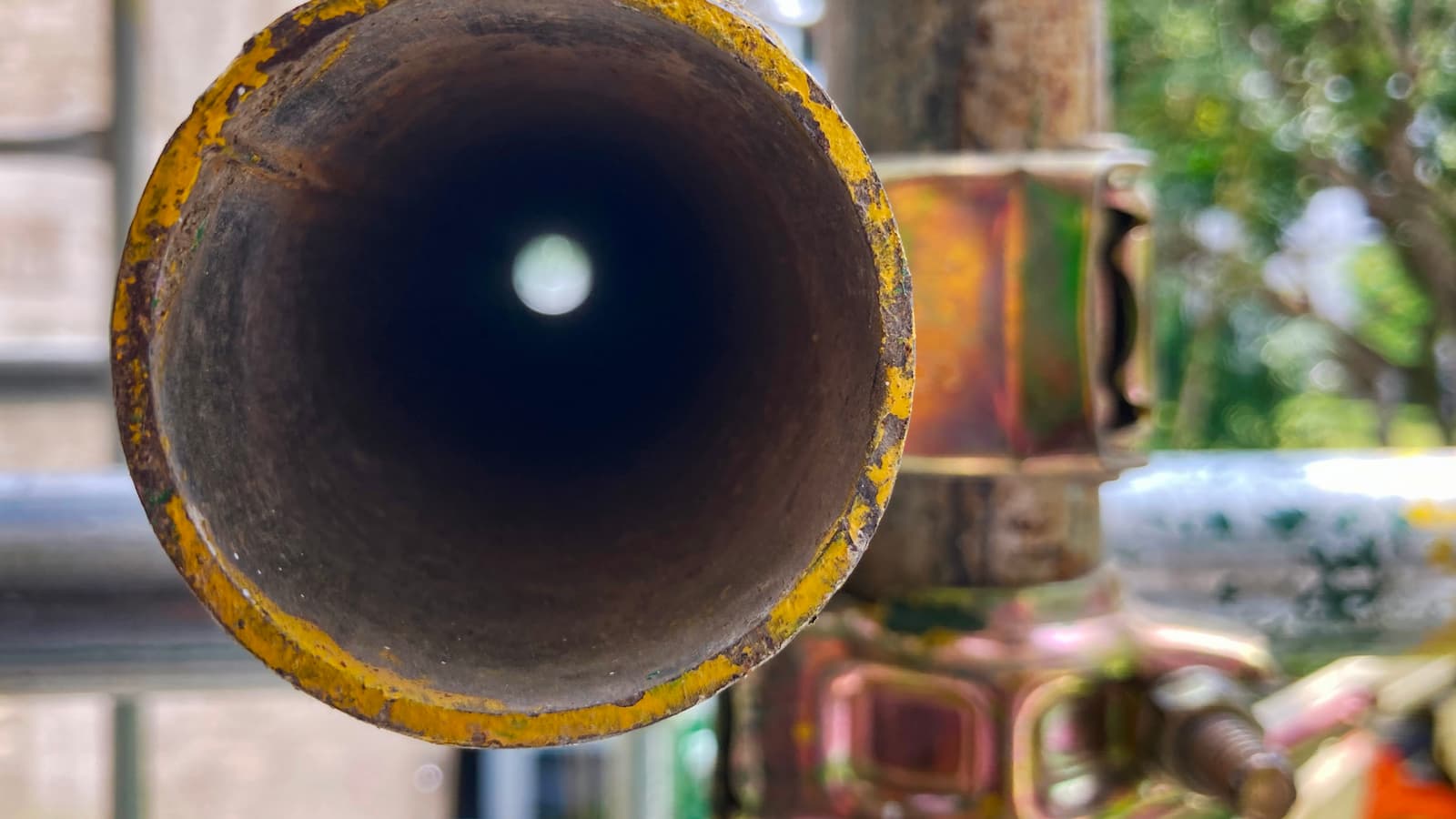Tradesman posts 'mesmerising' epoxy lining video showing an old pipe being revived
The video has gained attention online with over 19k likes

A tradesman who videoed himself reviving old pipework with epoxy lining has become an unexpected hit online after it racked up over 19 million views.
The video shows contaminated and damaged pipes being lined with epoxy using air pressure to push the lining through the entire pipe. And it's the satisfying pushing of the lining through the end of the pipe that gained so much attention online.
However, we look at whether it is possible to use this in your home's pipework, the regulations involved, the pros and cons of using this method as opposed to replacing the entire pipework and how to find a builder who can do it for you.
Video shows technique known as CIPP lining
Have you ever heard of this incredible method to rehabilitate old contaminated pipes? This is called Epoxy Lining! pic.twitter.com/oEPJMLfezuOctober 6, 2024
Epoxy pipe lining is a non-invasive solution used to rehabilitate contaminated or damaged pipes without the need for full pipe replacement.
The epoxy coating aims to create a protective barrier inside the pipe, preventing further corrosion and contamination. It helps stop internal corrosion, prevents the leaching of harmful substances like lead, and hinders the growth of microorganisms such as legionella. This makes it suitable for use in pipes carrying potable water, chemicals, steam, and sewage.
The video that has had over 19 million views online shows an inflatable liner moving an epoxy resin through the pipe using air pressure, which evenly coats the pipe’s interior walls. The process is also known as Cured-in-Place-Pipe (CIPP) lining as when the epoxy hardens it sets and protects the walls quickly.
Epoxy lining can be completed in just a few days
Lining old pipes with epoxy resin is particularly beneficial when access to pipes is challenging or costly, as it eliminates the need for major construction work, such as tearing down walls or floors.
Bring your dream home to life with expert advice, how to guides and design inspiration. Sign up for our newsletter and get two free tickets to a Homebuilding & Renovating Show near you.
The epoxy coating process can be applied to pipes made of copper, steel, iron, and it is efficient enough to coat pipes as small as 15mm in diameter, including those with multiple bends and tees.
Compared to traditional pipe replacement, which may take weeks, epoxy lining can be completed in just a few days, minimising disruption, downtime, and additional costs like temporary housing for tenants or business closures.
Pipelining is a way to restore the pipes from corrosion, leaks, or cracks with a liner that is soaked in a combination of resin and epoxy.It is cost-effective compared to the traditional alternative of replacing pipes. This process is called Cured-in-Place-Pipe (CIPP) lining.… pic.twitter.com/6YLsbGZJc6January 16, 2024
Pros and cons with epoxy lining
SageWater, American pipe replacement specialists, outlines concerns with epoxy pipe lining, portraying it as a less dependable option compared to full pipe replacement.
While epoxy lining is designed to coat pipes with resin to resolve corrosion and pinholes, the method has numerous drawbacks. These include "challenges in ensuring even adhesion," difficulty in making future repairs, and the potential for more corrosion if the epoxy cracks or is not applied correctly.
As a result, many epoxy-lining projects fail, often leading to "lawsuits and expensive full pipe replacements within a short time." SageWater advises seeking a repipe bid, as "a full pipe replacement is typically the same cost, and sometimes even less expensive" while also offering the security of a warranty, which epoxy lining typically lacks.
However, Adrien Brooks from Pipe Lining Services emphasises that the success of epoxy pipe lining depends heavily on proper installation and preparation.
He notes: "With any kind of coating, it's all down to preparation," highlighting that materials must be used correctly for the process to work.
Brooks acknowledges that epoxy lining has "upsides and downsides," recommending it for large, hard-to-access metallic pipes, like those in mansions, but advises a repipe for smaller homes.
He states that since 2018, Brooks claims to have seen "only one failure" in epoxy lining. He also claims that the process leaves "80% less carbon footprint than replacing a full pipe".

Adrian Brooks, the project manager at Pipe Lining Services (PLS), oversees the remediation of failing pipework using both traditional lining methods and internal coating techniques. PLS utilises a range of products tailored to the specific needs of the pipes, from handling aggressive seawater to high-temperature systems or even intricate, ornate rectangular pipework.
Regulations for epoxy lining
The regulations for using resin to line pipes, especially for potable water mains, outline several important steps and requirements:
- Resin materials: The materials must be approved, moisture-tolerant, and solvent-free, such as two-part epoxy or polyurethane. The resins need to change color when mixed correctly for easy visual inspection of mixing quality.
- Approval process: Resins must be tested and listed on approved product lists by national authorities (e.g., Drinking Water Inspectorate). This ensures they do not negatively impact water quality.
- Cleaning and preparation: Pipes must be thoroughly cleaned using methods like power boring, jetting, or pigging. After cleaning, they must be free from standing water, often achieved by foam swabbing. Drying the pipes to meet specific dew point criteria may be necessary.
- Application: The resin is spray-applied through specialized equipment that must be approved and compatible with the resin. This ensures uniform coating and prevents defects.
- Inspection: Pre- and post-application inspections using CCTV or laser profiling may be required to ensure proper cleaning and successful lining.
- Quality control: Resin application must adhere to stringent curing, monitoring, and quality control processes, and any lining defects need rectification.
Government certified epoxy pipe lining specialists in the UK include Adler & Allan, Countrywide Industrial Coatings and Pipe Lining Services.

News Editor Joseph has previously written for Today’s Media and Chambers & Partners, focusing on news for conveyancers and industry professionals. Joseph has just started his own self build project, building his own home on his family’s farm with planning permission for a timber frame, three-bedroom house in a one-acre field. The foundation work has already begun and he hopes to have the home built in the next year. Prior to this he renovated his family's home as well as doing several DIY projects, including installing a shower, building sheds, and livestock fences and shelters for the farm’s animals. Outside of homebuilding, Joseph loves rugby and has written for Rugby World, the world’s largest rugby magazine.
